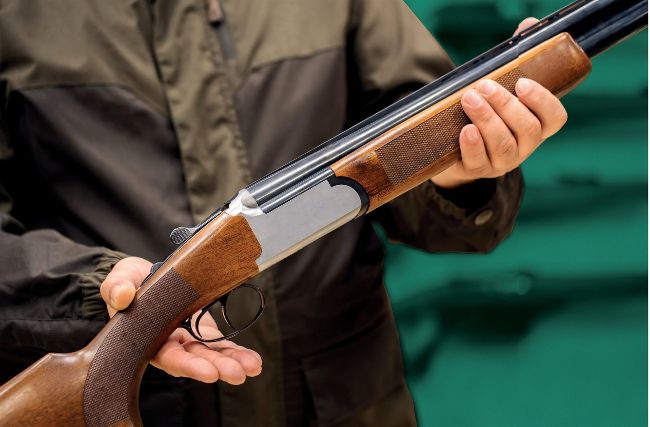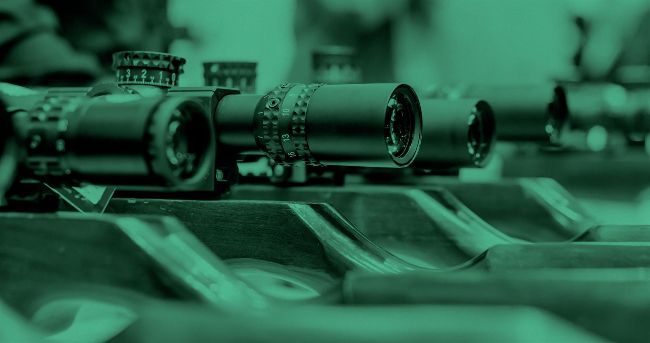SELLING TO FIRST-TIME GUN BUYERS – WHAT RETAILERS NEED TO KNOW
Best practices for engaging and educating new customers to create long-term relationships

IMAGE: SHUTTERSTOCK - DMITRY MARKOV152
First-time gun buyers represent an important segment of the UK firearms market. Whether they are purchasing a shotgun for clay shooting, a rifle for deer stalking, or an airgun for target shooting, these customers often arrive with enthusiasm – but also a lack of experience. Unlike seasoned shooters who know their requirements, newcomers need clear guidance on selecting the right firearm, understanding licensing laws, and ensuring safe storage and handling .
The UK firearms market is heavily regulated, and the process of obtaining a shotgun or firearm certificate can be daunting for first-time buyers. Many are unfamiliar with Home Office licensing requirements, police background checks, and storage laws, leading to uncertainty when making their first purchase. Additionally, because private firearm ownership is far more restricted in the UK than in other countries, many buyers may have misconceptions about what is legal and what is not.
For retailers, building trust with first-time buyers is essential. A positive experience – where a customer is given clear, knowledgeable advice – can encourage repeat business, while a poor interaction may lead them to abandon the purchase altogether.
UNDERSTANDING THE FIRST-TIME BUYER
First-time buyers come from a variety of backgrounds, each with different motivations for purchasing a firearm or airgun. Some are getting into shooting sports and looking for their first shotgun or rifle for game shooting, clay pigeon shooting, or target practice. Others may be landowners needing a firearm for pest control or deer management. Airguns, in particular, attract newcomers due to their accessibility and suitability for pest control, target shooting and plinking.
First impressions matter. A well-organised, well-lit store with clearly labelled sections makes it easier for customers to navigate and find what they need. Having a dedicated area for beginner-friendly firearms, air rifles, and accessories can be particularly effective. This could include signage with simple explanations of different types of guns, safety tips, and a step-by-step guide to licensing. Printed leaflets or digital screens with key information can help reduce uncertainty and encourage engagement.
Beyond the layout, staff approachability is crucial. A warm greeting and an open-ended question – such as “What brings you in today?” can put a first-time buyer at ease.
It’s important to avoid assuming knowledge; while some customers may have done extensive research, others will be relying entirely on the retailer’s expertise. Conversations should be clear and jargon-free, offering guidance without making the customer feel inexperienced.
Providing hands-on experience is another way to build confidence. Allowing a customer to handle an unloaded firearm or air rifle, feel its weight, and understand how it functions under supervision can demystify the buying process. This is particularly useful for those unsure about what size or style of gun suits them best. If a range is available nearby, encouraging customers to try different models before committing to a purchase can further enhance their confidence and satisfaction.
A welcoming environment also extends beyond the store itself. Offering introductory workshops, safety demonstrations, or oneon-one consultations can provide new buyers with a valuable foundation. Partnering with local shooting clubs or instructors for beginner training sessions helps reinforce responsible gun ownership while creating a sense of community around the store.
ASKING THE RIGHT QUESTIONS
For many first-time buyers, walking into a gun shop can be a daunting experience. They may have spent hours researching online, watching videos, or reading forums, yet still feel overwhelmed when faced with a wall of firearms and air rifles. Some arrive with a clear idea of what they want, while others are unsure where to start. A good retailer’s job isn’t just to sell them something – it’s to guide them towards the right choice.
One of the most important things a retailer can do is ask the right questions. Simply handing a customer the most popular model or the one with the highest profit margin is a short-sighted approach. Instead, it’s worth taking a moment to understand their specific needs. Are they looking for a shotgun for game shooting, or do they need a small-calibre rifle for pest control? If they are interested in an air rifle, will they be using it for target shooting or dealing with vermin? Some customers may be purchasing for sport, while others are landowners looking for a practical tool. Knowing their intended use will narrow down the options significantly.
Experience level is another crucial factor. A first-time buyer who has never handled a firearm before will need more guidance than someone who has shot regularly but is only now getting their first certificate. Some will have grown up around guns, while others may have only fired one at a game fair or range day. Those completely new to shooting may need extra reassurance and a more detailed introduction to handling, safety, and maintenance.
Licensing and legal requirements should also be discussed early in the conversation. Some customers may not realise that they need a shotgun or firearm certificate, while others may be unaware that high-powered air rifles require an FAC. In England and Wales, sub-12ft/lbs air rifles and sub-6ft/lbs air pistols can be bought without a certificate, but the rules differ in Scotland and Northern Ireland.
Retailers should be prepared to explain these regulations clearly, ensuring buyers fully understand their responsibilities.
“ONE OF THE FIRST LESSONS ANY NEW GUN OWNER MUST LEARN IS THAT SAFETY BEGINS THE MOMENT THEY PICK UP A FIREARM. RETAILERS ARE OFTEN THE FIRST POINT OF CONTACT
WITH NEW GUN OWNERS”
Storage is another area that can catch out first-time buyers. Owning a firearm or higher-powered air rifle comes with strict security obligations. Many newcomers won’t realise that they need an approved gun cabinet or that their local firearms officer may need to inspect their home security arrangements before issuing a licence. Helping them understand these requirements from the outset can prevent frustration later on.
Rather than overwhelming the customer with too much information all at once, a good approach is to provide clear explanations and allow them to ask questions. Having printed guides or directing them to reputable sources online can also be helpful. A well-informed customer is more likely to make a confident purchase and return for future advice, accessories, or upgrades.
PRIORITISING FIREARM SAFETY AND EDUCATION
For first-time buyers, safety is often one of their biggest concerns – but many don’t know where to start. Retailers play a key role in ensuring that new customers leave their store with more than just a purchase. They need a clear understanding of how to handle, store, and operate their firearm or airgun responsibly.
One of the first lessons any new gun owner must learn is that safety begins the moment they pick up a firearm. Every gun should be treated as if it were loaded, and proper muzzle discipline must be followed at all times. A relaxed grip or misplaced trigger finger can lead to accidents, so it is essential that first-time buyers understand how to handle a firearm correctly before they even consider firing it. The same principles apply to air rifles and pistols, particularly higher-powered models that require a firearm certificate.
A hands-on demonstration at the point of sale can help reinforce these principles. Allowing customers to handle a gun under supervision, explaining its safety features, and showing them how to check that it is unloaded gives them practical knowledge before they take it home. If possible, staff should walk them through the correct stance, grip, and handling techniques to build confidence. While retailers are not shooting instructors, they are often the first real point of contact for new shooters, and a little extra guidance can go a long way.
Storage is another area where first-time buyers may lack awareness. Shotguns and section 1 firearms must be kept in a Home Office -approved gun cabinet, securely fixed to a solid structure. Air rifles under 12ft/lbs and air pistols under 6ft/lbs do not require a certificate in England and Wales, but they should still be stored securely to prevent unauthorised access, particularly in homes with children. Retailers should be prepared to advise on suitable cabinets, locks, and other security measures to ensure compliance.
Providing additional resources, such as printed safety guides or links to online training materials, can reinforce key safety messages once the customer leaves the store. For those who need more hands-on instruction, recommending local shooting clubs or safety courses can be an effective way to set them on the right path.
EXPLAINING THE LEGAL REQUIREMENTS CLEARLY
For many first-time buyers, the legal side of firearm and airgun ownership is the most daunting aspect of making a purchase. A retailer’s ability to explain the legal framework in a clear, straightforward manner can make all the difference in ensuring a smooth and successful sale.
Retailers should have clear, easy-tounderstand literature available in-store or online, outlining the steps required to obtain a firearm or shotgun certificate. A simple checklist covering key requirements – such as police interviews, safe storage regulations, and waiting times – can help new buyers navigate the process. Taking a proactive approach to explaining legal requirements not only helps customers make informed decisions but also ensures compliance with the law, protecting both the retailer and the buyer.
By making legal guidance an integral part of the sales process, retailers can position themselves as trusted advisors rather than just sellers. Helping first-time buyers understand their obligations will not only smooth their journey into gun ownership but also foster confidence and long-term loyalty.

IMAGE: SHUTTERSTOCK - LUTSENKO_OLEKSANDR